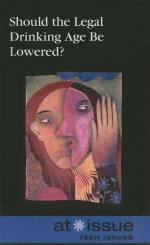|
This section contains 2,536 words (approx. 9 pages at 300 words per page) |

|
Before the twentieth century, there were few legal restrictions on the consumption of alcoholic beverages by youth. Early in the twentieth century, laws prohibiting alcohol sales to minors began to be implemented, as part of a broader trend of increasing legal controls on adolescent behavior. The temperance movement succeeded in establishing national Prohibition in 1919 but when it was repealed in 1933, all states implemented legal minimum ages for alcohol purchase or consumption, with most states setting the age at 21.
From the 1930s through the 1960s, the issue received little public attention. In 1970, the 26th Amendment to the U.S. Constitution lowered the voting age in federal elections from 21 to 18. By 1974, all fifty states had lowered their voting ages for state elections to 18. As part of this trend of lowering the "age of majority," twenty-nine states lowered their minimum drinking ages between 1970 and 1975, most...
|
This section contains 2,536 words (approx. 9 pages at 300 words per page) |

|


